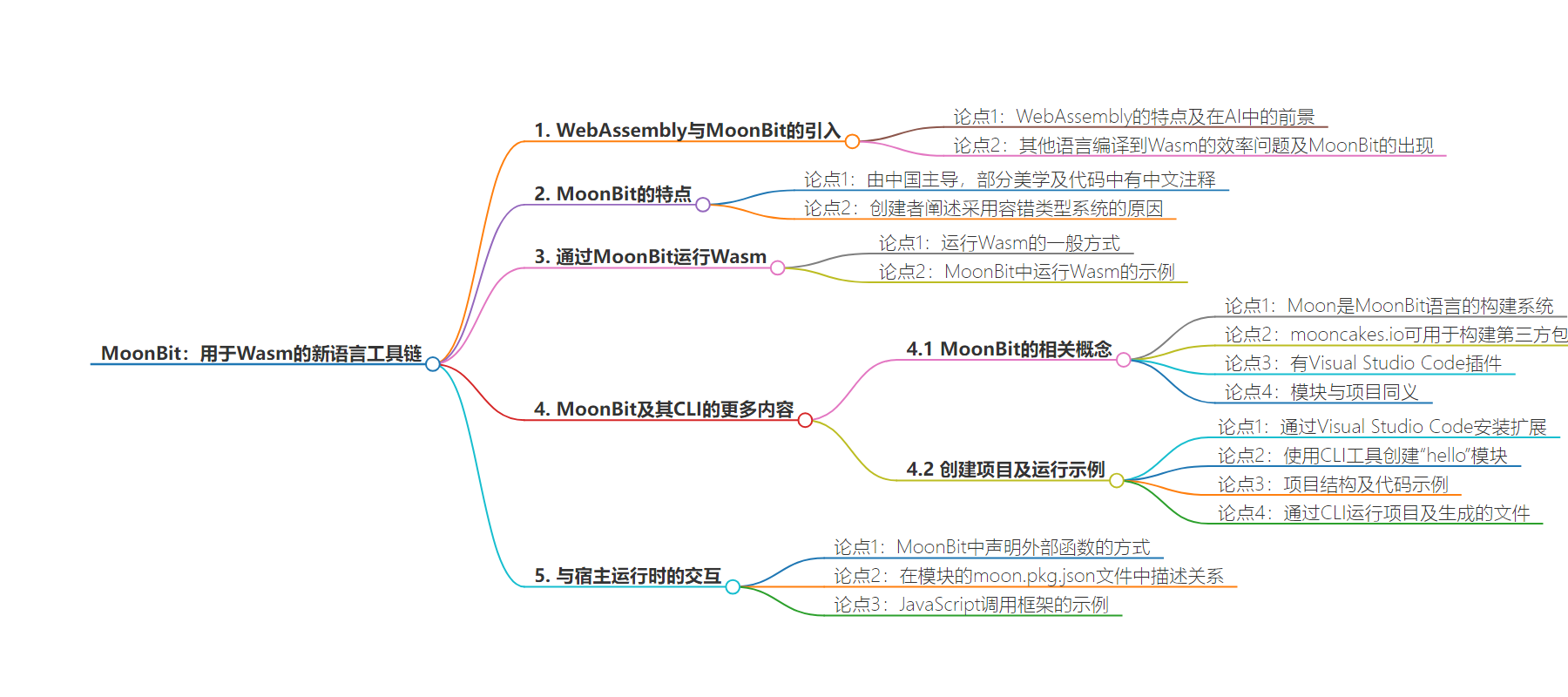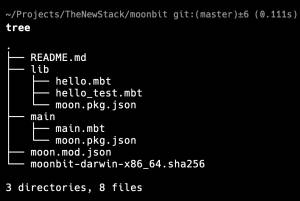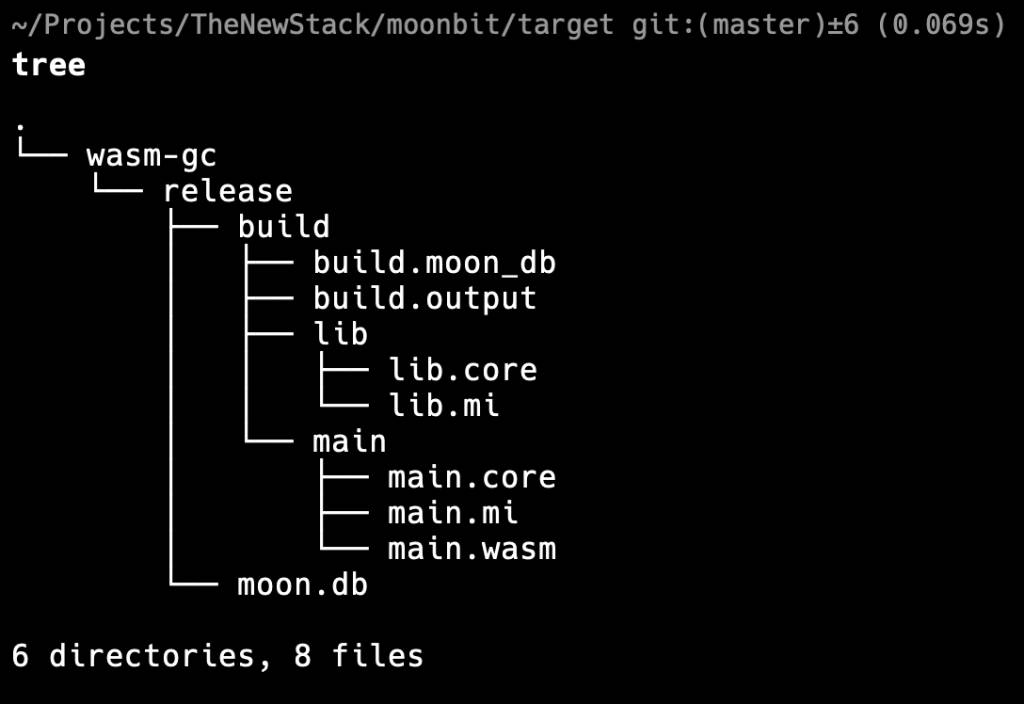包阅导读总结
关键词:MoonBit、WebAssembly、语言工具链、JavaScript、Foreign Function Interface
总结:本文介绍了 MoonBit 这一针对 WebAssembly 的新语言工具链。它解决了其他语言编译到 Wasm 效率不高的问题,支持多种后端。文中还讲解了通过 MoonBit 运行 Wasm 的方法、MoonBit 的相关特性及 CLI 工具,并提及了与宿主运行时交互时的 Foreign Function Interface。
主要内容:
– MoonBit 与 WebAssembly:
– WebAssembly 特点及未来在 AI 方面的潜力。
– MoonBit 可高效编译到 Wasm,适用于小型设备。
– 运行 Wasm 方式:
– 介绍一般运行 Wasm 的方法。
– 通过 MoonBit 的示例讲解运行 Wasm 的要点。
– MoonBit 及 CLI:
– 相关解释,如构建系统、包管理等。
– 安装 MoonBit 语言扩展和 CLI 工具。
– 创建“hello”模块示例。
– 与宿主运行时交互:
– 通过 Foreign Function Interface 实现。
– 展示相关声明、模块关系描述及 JavaScript 调用框架示例。
思维导图:
文章地址:https://thenewstack.io/introduction-to-moonbit-a-new-language-toolchain-for-wasm/
文章来源:thenewstack.io
作者:David Eastman
发布时间:2024/7/12 17:37
语言:英文
总字数:1245字
预计阅读时间:5分钟
评分:82分
标签:WebAssembly,MoonBit,语言工具链,Wasm,人工智能
以下为原文内容
本内容来源于用户推荐转载,旨在分享知识与观点,如有侵权请联系删除 联系邮箱 media@ilingban.com
WebAssembly (Wasm) combines the efficiency inherent in low-level code programming with the ease of component transportability typically found in Linux containers. In some respects, it competes with Docker. However, intensive work within a browser heavily suggests a future in AI.
As it happens, other languages don’t necessarily compile efficiently to Wasm, which somewhat undoes the advantage of having a program that can run in the browser. This is where MoonBit comes in, although it can also target other backends, such as JavaScript. By targeting Wasm, MoonBit gets a free ride on many smaller specialist devices.
MoonBit is a Chinese-led project: this accounts for some of the aesthetics, as well as the occasional Chinese language comments in the code. If applicable, you should check your own organization’s governance systems before playing with it.
As MoonBit’s creator Hongbo Zhang says, “The reason we decided to have a fault-tolerant type system is because we want to have the IDE share the same code base with a compiler.” This allows the MoonBit language you see within Visual Studio Code to be more of a first-class citizen. This is why the type system is important — the stronger it is, the more valid work the IDE can do before the compiler takes over.
How to Run Wasm via MoonBit
But what do we mean by “running Wasm”? This is important because your OS doesn’t treat it as a free-running application sitting in your file system quite yet.
Before we look closer at MoonBit, let’s make sure we understand how we run Wasm. In most cases, we need a JavaScript framework to load and hold it. To use WebAssembly in JavaScript, you first need to pull your module into memory before compilation/instantiation:
|
WebAssembly.instantiateStreaming(fetch(“simple.wasm”), importObject).then( (results) => { // Do something with the results! }, ); |
Compare with this example within the MoonBit Sudoku gallery code:
|
WebAssembly.instantiateStreaming( fetch(“target/wasm/release/build/main/main.wasm”), importObject ).then((obj) => { obj.instance.exports._start(); assign = obj.instance.exports[“sudoku/main::ij_assign”] initValues = obj.instance.exports[“sudoku/main::initValues”] readValues = obj.instance.exports[“sudoku/main::ij_read”] solve = obj.instance.exports[“sudoku/main::solveValues”] }); |
So we have a few things to get our head around here. The WebAssemby.instantiateStreaming method waits for a Response object (as a promise) for the Wasm file to load. Theobj instance member is then accessed, and the contained exported functions are invoked. The exports clearly describe a module/method to call within the Wasm code.
OK, so this gives us a feel for what we need to do via MoonBit; prepare a Wasm file with the necessary exported functions. While we can play with the MoonBit language freely in this online visual code site, in this post I look at constructing the Wasm itself.
More About MoonBit and its CLI
Here are a few explanations:
- Moon is the build system for the MoonBit language.
- You can build third-party packages with mooncakes.io, so it is a putative package management system.
- As I’ve mentioned, there is a Visual Studio code plug-in for MoonBit.
- The term module is synonymous with a project.
- To create the exports we saw evidence of, we need the Foreign Function Interface, which we’ll check out at the end of this post.
With that, let’s dig in.
We could start with Visual Studio code and install the MoonBit Language Extension. As usual, I’m doing this on my trusty old 2015 Macbook, and it worked just fine.

But we’ll focus on the CLI tools to manage projects. That is because I want to cement in my mind the connection between Wasm code and exposing it in the browser.
Opening Warp, I downloaded the CLI tools:
|
> curl –fsSL https://cli.moonbitlang.com/install/unix.sh | bash |

I then created a nice default ‘hello’ module with the moon new command:

The project’s setup on disk shows the relationship between the library and the main package:

The JSON packaging manifest provides cues for the builder for each package. The mod file describes the module as a whole. The first line declares that this module is called “eastmad/hello”.
The hello.mbt file contains our familiar language introduction:
|
pub fn hello() –> String { “Hello, world!” } |
This follows in a similar form to the modern language idiom for a method or function — we saw it in Gleam for example. This leaves the main.mbt code in the main package with the responsibility of posting the string to the console:
|
fn main { println(@lib.hello()) } |
That @lib.hello() is clearly an internal call to the lib package that was resolved within the package description.
Running this through the CLI is simple enough:

Wonderful. But I’d like to know what that produced. There is a whole new target directory, so let’s take a look at that:

(You can see references to wasm-gc, which is the garbage-collected version of Wasm. All this means, essentially, is who and how responsibility for “cleaning up after itself” works out.)
So we got the promised .wasm file — it is 285 bytes long bit of binary, with the greeting words visible, as well as the token “_start”, referenced in the example javascript call at the beginning — as well as other supporting objects. I don’t see evidence of any “exports” like in the JavaScript framework at the top yet; all we did was print to the console internally.
Interacting With the Hosting Runtime
To interact with the hosting runtime when embedded inside the browser, MoonBit refers to Foreign Function Interface (FFI). Let’s finish off our introduction by having a quick look at this.
To declare a foreign function within MoonBit, you can do this:
|
fn cos(d : Double) –> Double = “Math” “cos” |
The actual function itself (the body) has been replaced with the putative module name and function name. You’ll see this reconstructed below when we call it from JavaScript.
You can then describe the relationship in the modules moon.pkg.json file:
|
1 2 3 4 5 6 7 8 9 10 11 12 13 14 15 16 17 |
{ “link”: { “wasm-gc”: { “exports”: [ “add”, “fib:test” ] }, “js”: { “exports”: [ “add”, “fib:test” ], “format”: “esm” } } } |
In this example the functionsaddandfib are exported, and the functionfibwill be exported with the name oftest.
Finally, for our maths example, the JavaScript calling framework would look something like this:
|
WebAssembly.instantiateStreaming(fetch(“xxx.wasm”), { Math: { cos: (d) => Math.cos(d), }, }); |
And this brings us more or less full circle. Most of these elements are visible in the Sudoku example.
While MoonBit is nearly production-ready (check the status here), it already describes a modern language as well as a workflow to create a Wasm project. I’m expecting small LLMs will get packed efficiently into Wasm format in the near future.
YOUTUBE.COM/THENEWSTACK
Tech moves fast, don’t miss an episode. Subscribe to our YouTubechannel to stream all our podcasts, interviews, demos, and more.
